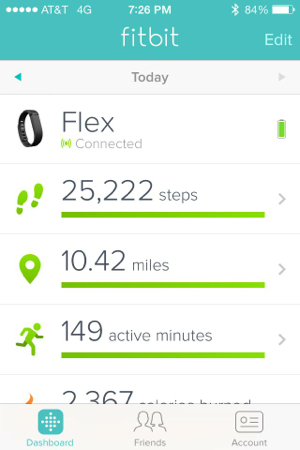[slideshare id=35991574&doc=consciouscomputingapps-operaamericatoolsessionbethkanter-140617191324-phpapp01]
I’m facilitating and presenting on a panel session at the Opera America National Conference taking place in San Francisco this week with Guillaume DeCugis, CEO of Scoop.It and Sean Waugh, San Francisco Opera. The session will share a wide range of free and low cost tools for implementing an organization’s content strategy as well as group and personal productivity. We will, of course, share the tools in the context of best practices.
My presentation will focus on personal productivity in an age of distraction, tools, skills, and best practices that staff members of nonprofits – large and small need. We all know that with so much content out there, it is eating our brains and memory, relying more on “google it.” But what if there was a way to use online tools, mobile apps, and software that helped lengthen our attention spans and replace information overload with a sense of mindfulness?
This question has spawned is a new category of online tools and apps– known by a number of labels such as “conscious computing,” “calming technology,” or contemplative computing.” These apps can transform our mobile phones, tablets, and computers from agents of distraction into agents of mindfulness. In his book, The Distraction Addiction: Getting the Information You Need and the Communication You Want, Without Enraging Your Family, Annoying Your Colleagues, and Destroying Your Soul, Alex Soojung-Kim Pang argues that taking a “digital sabbath” doesn’t solve the problem and while a good thing, isn’t enough. It may sound counter-intuitive but we need to use technology.
I don’t think that tools alone can do it alone. I think we need also what Howard Rheingold calls “Infotention Skills or training our attention and developing productivity habits in a networked age should go hand-in-hand with the use of these tools. Here are some of the tools that can help make better habits or break bad ones.
1. Train Your Attention with Your iPhone Timer: I would never have been able to write my book, if I hadn’t read Peter Bregman’s 18 Minutes A Day. He describes a simple technique of taking 5 minutes every morning to write down 3 important tasks to accomplish and then reminding yourself every hour as to whether you have completed those tasks using your iPhone alarm. And then reflecting at the end of the day for 5 minutes about what you accomplished.
2. Avoid Procrastination: Pomodoro App: Putting off more important tasks and doing less important tasks or simply avoiding them all together is procrastination and is one symptom of being distracted. The Pomodoro method and app is one way to avoid the productivity loss of procrastination. And, of course, there’s an app to help you apply this skill.
3. Keep A To Done List: Most people write “to do lists” that are never ending. As soon as you tick off completed tasks, you add new ones. I keep a “to done reflection” list that allows me to see what I’ve accomplished and reflect on it, not bury myself in busyness. Idonethis is a simple app that helps you and your team track what’s been done. Here’s a guide to this useful productivity habit.
4. Block Out Distractions: There are apps known as a “blockers” that prevent you from going online while you are doing other tasks like writing. They can also automate turning off alerts and other distractions. Freedom and Concentrate (for the MAC) are two examples. One of my favorites is Ommwriter which turns your laptop into an old fashion word processor. However, if you have to do “work” on Facebook, here’s some work flow tips for avoiding distraction. (One thing that I do is try to do my interaction on my phone and use my desktop for posting. I’ve trained myself with the 18 minutes technique to avoid temptation of looking at friends’ dog photos that way while I am working.)

5. Shut Off the Damn Computer and Go for A Walk: Walking is actually work, not a break. It can help you think better, be more creative and if you do walking meetings it can build your team. (Read more here). If you want to be sure you are incorporating movement into your day, use a fitbit or other device to track. If you want to get everyone in your office on board, use the app Fi.tt to help motivate everyone on your team with a leaderboard. I set a Fi.tt challenge for the NTC Conference! Finally, if you want to walk and earn money for a good cause, download Charity Miles.
6. Take a Deep Breath: The effect of daily meditation or just deep breathing when you are overwhelmed with work can do wonders. There are many apps that can help you find and practice meditation, guided imagery, and breathing. My favorite is MyBreath where you can use your headphone mic to record your breathing and it tells you whether you taking deep breaths (I’m a data geek so I love the charts and graphs it generates). The Mindfulness App offers a number of guided meditation and you can do long breaks or mini breaks.
7. Chill Out: Ever notice how a walk on the beach or a hike in the woods can make you feel so calm? But who can do that if you are in the middle of your work day. No worries, go to Calm.com or download the app and do some virtual chilling out.
Do you have a favorite personal productivity tool that helps you reduce stress, focus, and get work done? Share it below!
